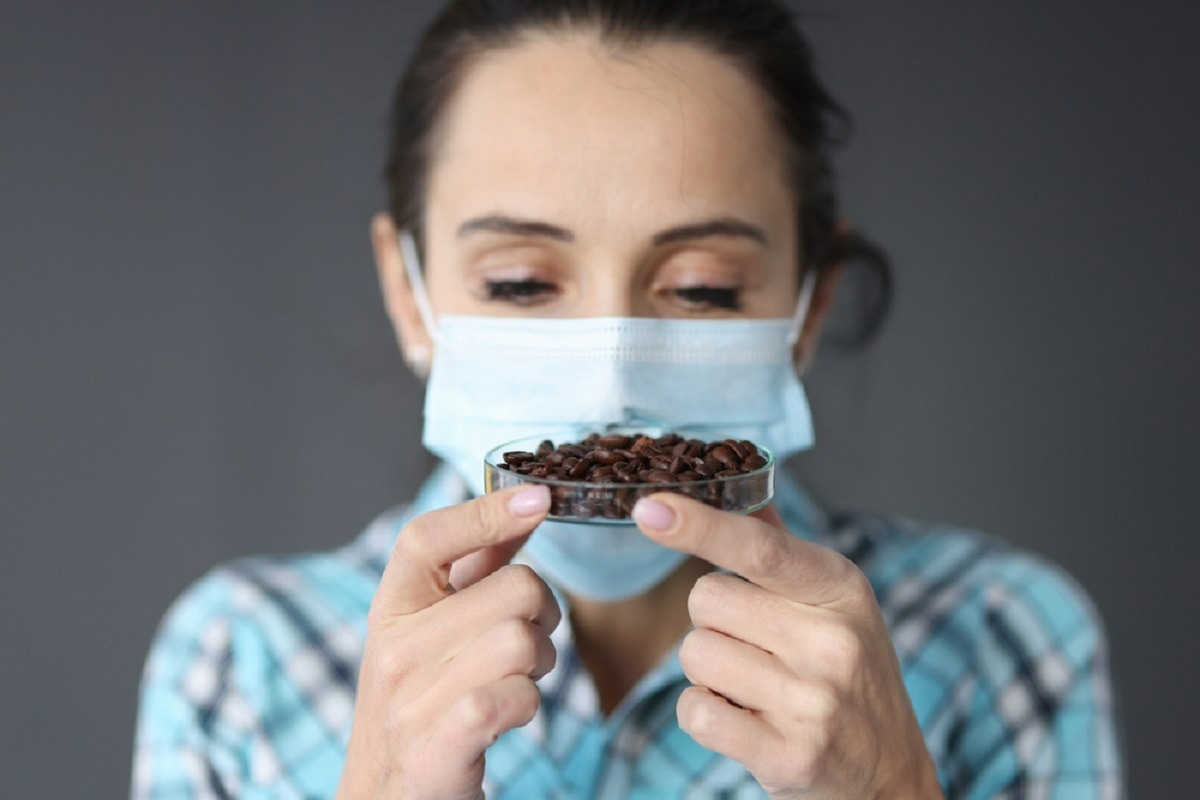In a recent study published in the BMJ, researchers performed a meta-analysis to assess taste and smell recovery in coronavirus disease 2019 (COVID-19) and prognostic indicators of the recovery.
 Study: Prognosis and persistence of smell and taste dysfunction in patients with covid-19: meta-analysis with parametric cure modelling of recovery curves. Image Credit: megaflopp/Shutterstock
Study: Prognosis and persistence of smell and taste dysfunction in patients with covid-19: meta-analysis with parametric cure modelling of recovery curves. Image Credit: megaflopp/Shutterstock
Background
Taste and smell dysfunction in COVID-19 has been studied extensively previously; however, further research is required to enhance understanding of the clinical course and recovery duration from such dysfunction. Further, it is yet to be determined if COVID-19-associated chemosensory dysfunction is temporary or permanent and the proportion of COVID-19 patients that may develop persistent taste and smell dysfunction.
About the study
In the present study, researchers meta-analyzed the persistence and prognostic implications of taste and smell dysfunction among patients with severe acute respiratory syndrome coronavirus 2 (SARS-CoV-2) infections.
Data were obtained from Embase, PubMed, Scopus, and Cochrane Library databases for published studies and the medRxiv server for preprints from the study’s inception up to October 3, 2021. Only observational studies with descriptive prognostic data and Kaplan-Meier or cumulative incidence time-to-event or survival curves comprising adults with COVID-19-associated taste and smell dysfunction were included in the analysis and reviewed by two reviewers.
The team excluded reviews, case reports, animal studies, conference abstracts, studies that reported combined taste and smell dysfunctions, and publications in languages other than English. The risk of bias was evaluated using the quality in prognosis studies (QUIPS) tool. The quality of evidence quality was assessed using the grading of recommendation, assessment, development, and evaluation (GRADE), the meta-analysis of observational studies in epidemiology (MOOSE) and preferred reporting items for systematic reviews and meta-analyses (PRISMA) guidelines.
The team reconstructed individual patient data (IPD) using numerical algorithms and pooled the data together for retrieving the survival curves, and the rates of taste and smell recovery were reported monthly for individuals who continued to survive. The percentage of COVID-19 patients with persistent taste and smell dysfunction was estimated by Weibull’s non-mixture cure modeling of the survival curves.
Further, the prognostic factors associated with taste and smell recovery were evaluated. The primary study outcomes comprised the percentages of COVID-19 patients with persistent taste and/or smell dysfunction. The secondary study outcomes comprised the odds ratio (OR) values for the factors associated with the prognosis of taste and smell dysfunction. The DerSimonian-Laird estimation method was used to account for heterogeneity in included studies, and mixed cure modeling was performed as a sensitivity analysis.
Results
A total of 18 studies (n=3,699 patients) from 4,180 records with low-moderate risk of bias and moderate-high quality of evidence were considered for the final meta-analysis after excluding four studies in which the bias risk was high. The study participants were aged between 30 years and 56 years, and 29% to 79% of them were men.
Of the included studies, nine studies were retrospective, and nine studies were prospective; 14 studies were conducted in hospitals, and four studies were conducted in communities. Smell recovery was investigated in eight studies, and taste and smell recovery were investigated separately in 10 studies. Five, four, and nine included studies were conducted in Asia, North America, and Europe, respectively, and most of the studies used binary definitions of taste and/or smell recovery.
Persistent taste and smell dysfunction was estimated to develop in 4.4% and 5.6% of COVID-19 patients, respectively. The findings remained largely unaltered after the sensitivity analysis, although the analysis indicated that the values may have been underestimated. At one month, two months, three months, and six months, 74%, 86%, 90%, and 96% of COVID-19 patients regained their smelling ability, respectively, and the corresponding 79%, 88%, 90%, and 98% regained their tasting ability.
Further, four studies mentioned that 13% to 30% of COVID-19 patients partially regained their smelling ability and 44% to 70% completely regained their smelling ability in the follow-up periods. The corresponding proportions of COVID-19 patients who partially and completely regained their tasting ability ranged from 8.3% to 30% and from 50% to 89%, respectively.
The factors associated with the prognosis of taste and smell recovery included dyspnea, steroid treatments, body mass index (BMI) values, presence of comorbid conditions (diabetes, cardiovascular disorders, and sinonasal disorders), immunoglobulin (Ig) levels, platelet counts, and neutrophil counts. The causative variants of SARS-CoV-2 infections were not associated with taste and smell recovery.
Further, females had a lesser probability of regaining their smelling ability (OR 0.5) and tasting ability (OR 0.3) compared to males. Likewise, COVID-19 patients with severe dysfunction of taste and smell in the initial days of SARS-CoV-2 infections (OR 0.5) or congestion in the nasal tissues (OR 0.4) had a lower probability of recovering their ability to smell.
Conclusion
Overall, the study findings showed that a significant proportion of COVID-19 patients may develop long-term taste and smell dysfunction, contributing to the long COVID burden.